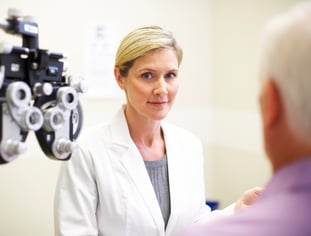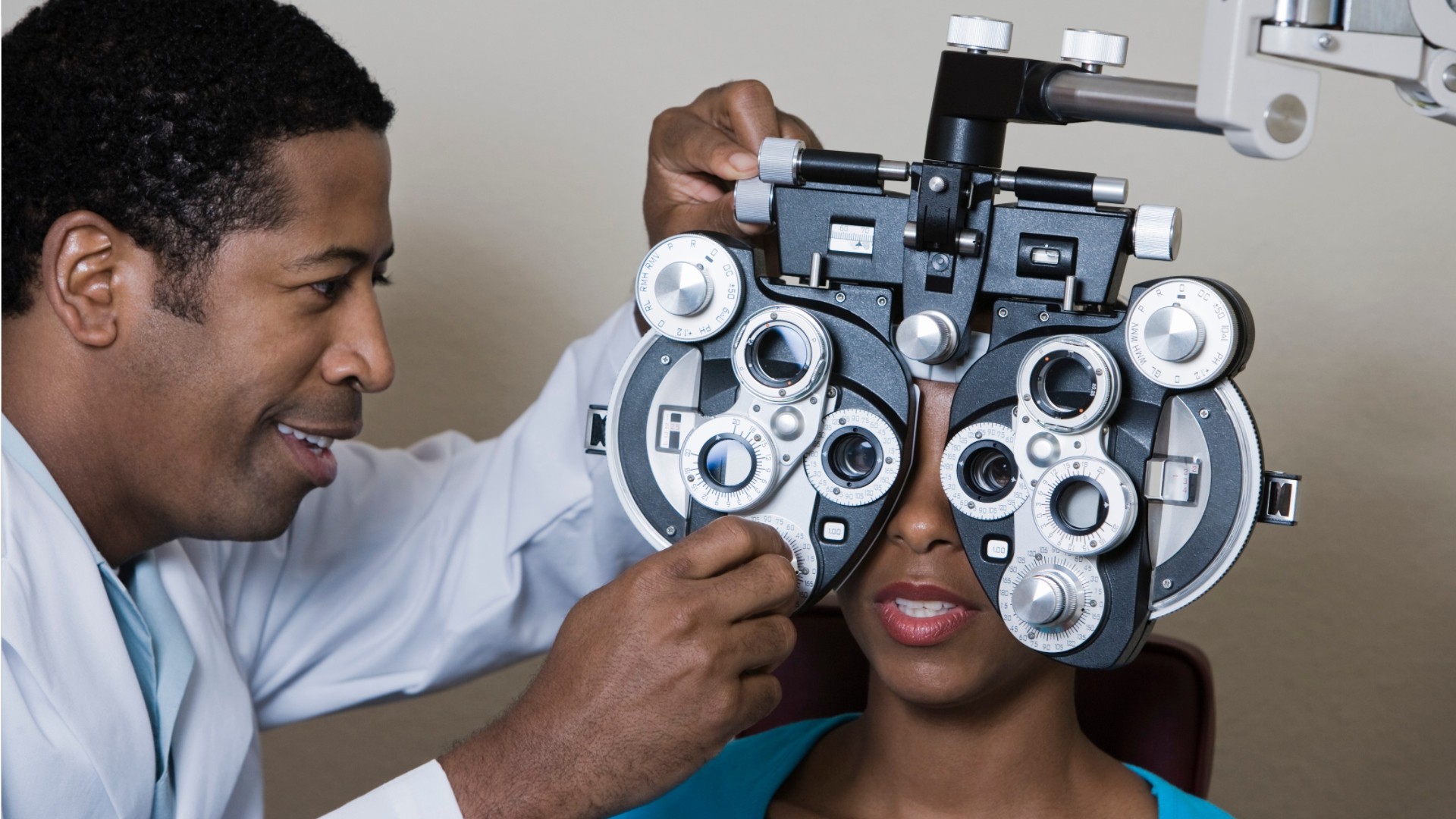Why Choosing an Eye Doctor Optometrist is Necessary for Your Eyes
Why Choosing an Eye Doctor Optometrist is Necessary for Your Eyes
Blog Article
Checking Out the current Technical Innovations in Optometry and What They Mean for Eye Doctors
From the precision of Optical Comprehensibility Tomography to the nuanced understandings offered by AI-driven diagnostic tools, these innovations are setting brand-new criteria in client evaluation and therapy. As these advancements permeate the technique, optometrists are encountered with the obstacle of accepting these devices to enhance client end results.
Technologies in Diagnostic Tools
Progressing the field of optometry, developments in diagnostic tools have revolutionized the means eye care professionals assess and identify visual disabilities and ocular conditions. The past decade has actually observed significant technical improvements, allowing more detailed and exact analyses.
One more trick development is the intro of advanced corneal topography systems, which map the surface curvature of the cornea with accuracy. These tools are especially advantageous for suitable contact lenses and identifying corneal problems. Additionally, electronic retinal imaging has transformed typical ophthalmoscopy, using comprehensive, breathtaking views of the retina that help with comprehensive aesthetic evaluations.
The growth of wavefront aberrometry has actually additionally been vital, making it possible for the evaluation of refractive errors with unparalleled accuracy (Eye Doctor Optometrist). This technology helps in tailoring corrective lenses and boosting surgical end results for refractive surgical procedures. Jointly, these analysis innovations equip eye doctors to deliver exceptional individual treatment, making certain very early treatment and tailored treatment techniques, eventually enhancing visual health outcomes
AI in Patient Management
Building on the structure of sophisticated analysis tools, the consolidation of synthetic intelligence (AI) in patient monitoring stands for a transformative leap for optometry. AI systems are increasingly employed to boost effectiveness, accuracy, and customization in person treatment. By examining large amounts of information, AI can recognize patterns and forecast prospective ocular conditions, enabling eye doctors to tailor interventions a lot more properly. This capability is crucial in handling chronic eye diseases such as glaucoma and diabetic retinopathy, where early detection and continuous monitoring are key.
Additionally, AI-driven platforms promote streamlined individual communications and administrative procedures. Automated scheduling, online consultations, and customized follow-up strategies not only improve person contentment but likewise optimize time administration for practitioners. These systems can triage individuals based upon the urgency of their problems, ensuring that those in important need get punctual focus.
Additionally, AI boosts decision-making by offering eye doctors with evidence-based referrals and treatment pathways. By integrating information from digital health and wellness documents, AI devices offer insights that notify clinical decisions, lowering the threat of errors and enhancing person outcomes. As AI remains to evolve, its function in individual monitoring will likely broaden, improving the landscape of optometric treatment.
Advances in Retinal Imaging
In the world of optometry, retinal imaging has actually seen amazing technological advancements that are boosting analysis abilities and patient care. Innovations such as Optical Comprehensibility Tomography (OCT) and fundus digital photography have actually changed exactly how eye doctors picture and assess the retina.
Improved imaging modalities like OCT angiography are additional refining analysis precision. This non-invasive strategy maps blood circulation in the retina, supplying vital understandings into vascular wellness without the requirement for dye shots. Furthermore, adaptive optics technology is being incorporated right into retinal imaging systems to fix ocular aberrations, supplying unmatched photo clarity. Such innovations promote the identification of min retinal adjustments that might signify illness development.
Moreover, improvements in synthetic knowledge are augmenting retinal imaging by enabling computerized evaluation of big datasets. These systems assist optometrists in determining patterns a sign of pathology, consequently improving diagnostic accuracy and performance. Jointly, these technologies are changing retinal imaging right into a foundation of modern-day eye care, improving end results and increasing healing opportunities.
Teleoptometry's Expanding Role
Teleoptometry is progressively ending up being a crucial component of eye treatment, driven by developments in data and analysis tools. As optometry welcomes digital makeover, teleoptometry helps with remote appointments, enabling eye doctors to expand their services This Site beyond traditional boundaries. This is specifically beneficial in underserved and rural locations where access to specialized eye care is typically restricted. By leveraging high-resolution video conferencing and advanced retinal imaging, eye doctors can conduct thorough eye tests from afar, guaranteeing prompt medical diagnosis and treatment.
The assimilation of artificial knowledge (AI) further improves teleoptometry, making it possible for the evaluation of visual data and aiding in the discovery of eye problems such as glaucoma and diabetic person retinopathy. AI-powered algorithms can rapidly analyze intricate imaging data, supplying optometrists with important understandings that reinforce professional decision-making.
Moreover, teleoptometry supports continuity of care through seamless assimilation with digital health and wellness records (EHRs), allowing eye doctors to keep thorough person histories. This makes sure that clients receive tailored and consistent care even when speaking with different practitioners.
Despite these benefits, difficulties stay, including guaranteeing information safety and security and taking care of client assumptions. However, teleoptometry stands for a substantial stride towards even more available, reliable, and patient-centered eye treatment. As modern technology progresses, its role is poised to broaden even more.

Future Fads in Eye Treatment
A myriad of ingenious patterns is find out here established to reshape the future of eye care, driven by technological developments and the progressing needs of individuals. One considerable pattern is the integration of fabricated intelligence (AI) in diagnostics, which assures to boost the accuracy and effectiveness of eye assessments. AI formulas can examine large amounts of information from retinal images, possibly detecting problems like diabetic retinopathy and glaucoma earlier than traditional methods.
Moreover, personalized medication is acquiring traction in optometry, with hereditary screening informing personalized treatment strategies. This strategy intends to enhance individual end results by tailoring interventions to private genetic profiles. Wearable modern technology, such as wise contact lenses, is additionally coming up, supplying real-time tracking of intraocular stress or glucose levels, hence offering continual understandings into ocular and systemic health.
The adoption of increased fact (AR) and virtual reality (VR) in training and patient education is one more arising fad. These innovations provide immersive experiences that can boost understanding and abilities both for clients and eye doctors. As these patterns progress, optometrists should stay abreast of technological advancements to provide advanced care, guaranteeing enhanced individual end results and contentment in the vibrant landscape of eye treatment.
Final Thought

Collectively, these analysis improvements empower optometrists to supply exceptional person care, ensuring early treatment and customized treatment techniques, inevitably boosting aesthetic health and wellness results.

As these technologies proceed to evolve, eye doctors have to adjust and include them into technique, ultimately maximizing process performance and raising the criterion of eye care provided to clients.
Report this page